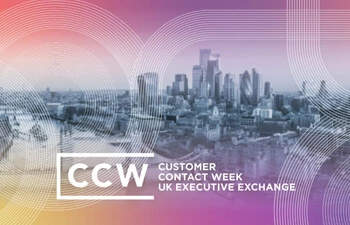Customer experience is the next product: Startups can’t afford to treat CX as support
We’ve entered a time when every startup competes not on what it builds, but how it feels to use. Ekaterina Mironova explains why the next competitive edge is experience
Add bookmark
When OpenAI can resolve a user’s issue faster than your startup team can acknowledge it, speed alone is no longer a differentiator. The next real competitive edge isn’t code or capital – it is experience.
Across each vertical, early-stage founders obsess over product-market fit, but most treat customer experience as an afterthought; support is something to “set up later.” Yet every metric that defines traction – activation, retention, referrals, lifetime value – lives or dies inside the customer journey.
CX isn’t a function you hire for after Series A. It’s part of your product DNA.

Don't miss any news, updates or insider tips from CX Network by getting them delivered to your inbox. Sign up to our newsletter and join our community of experts.
The AI paradox: Automation raised the bar
Artificial Intelligence didn’t kill the human touch; it raised the standard for it.
In 2026, consumers expect:
- Instant resolution for simple requests (thanks to ChatGPT-level assistants).
- Context-aware interactions that remember past issues and preferences.
- Authentic empathy when things go wrong.
That last part, especially, is precisely where automation still fails.
The startups winning today are those that combine AI efficiency with human connection. Think of how Notion blends human-curated onboarding videos with in-app automation, or how fintechs like Revolut route complex disputes to specialized human agents within seconds.
AI is no longer a differentiator. The blend is.
The startup blind spot
Founders repeat three costly patterns:
1. CX as “post-launch cleanup"
Support is hired once tickets pile up, not when customer journeys are designed. The result: every friction point becomes technical catastrophe.
2. Feedback loops that go nowhere
Issues discovered by support never reach product or engineering, so the same bugs and errors reappear sprint after sprint.
3. Automation before understanding
Chatbots are deployed to deflect, not to learn. They frustrate users and hide systemic flaws instead of fixing them.
These patterns don’t just kill satisfaction - they destroy retention. Churn is rarely about one bad feature; it’s about the feeling that nobody’s listening.
CX is product strategy, not PR
Here’s the mental shift startups need: Your customer experience is your product-market fit engine.
When customer experience becomes part of the product itself, it turns into a living feedback loop – every action a customer takes sends a signal that helps you make the product better.
1. Design for journey, not feature
Before writing a single line of code, map the full path: onboarding, confusion points, recovery moments. Each “moment of truth” should have a clear resolution path.
2. Instrument every interaction
Tag tickets, chat logs, or NPS verbatims to feature areas. Surface that data to product dashboards. The goal: convert every complaint into roadmap insight.
3. Create a human-in-the-loop model
Let AI handle routine flows, but give users an effortless escape hatch to a real person. Keep context persistent so the human doesn’t restart from zero.
4. Measure what matters
Track retention, repeat usage, and referral behavior — not just response time or ticket volume. Speed is meaningless if users still leave.
5. Make CX everyone’s job
Rotate engineers and product managers (PMs) through support once a quarter. When the builders feel customer pain directly, quality improves overnight.
From “support center” to “signal center”
Great startups treat CX as a signal-rich intelligence sense, not a cost center.
- Each support ticket is a data point revealing friction in onboarding, UX, or pricing.
- Each complaint about billing reveals a design flaw, not just a user error.
- Each cancellation request is product research in disguise.
One early-stage SaaS startup I advised reduced churn by 24 percent in one quarter by simply classifying support tags by root cause and prioritizing fixes accordingly. They didn’t spend a dollar on marketing – they just listened faster.
When you operationalize listening, CX becomes your cheapest growth channel.
How to build CX into the first 90 days
You don’t need a 50-person team or enterprise CRM. Here’s a lean blueprint for early-stage founders:
Month 1: Map and simulate
- Create a one-page customer journey map from first touch to renewal.
- List “what could go wrong” at each step.
- Build a Slack channel called #voice-of-customer where every team posts friction they observe.
Month 2: Capture and categorize
- Set up a lightweight help desk (Zendesk, Intercom, or even Notion forms).
- Tag issues by type, feature, and frequency.
- Review patterns weekly with your product team.
Month 3: Automate + escalate
- Add AI for FAQs and known errors, but ensure human fallback within 60 seconds.
- Create a simple rule: if a user contacts support twice within seven days, a human must call them.
- Close the loop: every resolved issue becomes a knowledge-base update or roadmap task.
This process costs almost nothing – but it teaches your startup to treat CX as a diagnostic system, not a reactive inbox.
The founder mindset shift
The best founders I’ve met don’t see CX as overhead; they see it as signal intelligence.
They personally join customer calls, read ticket summaries, or run “CX office hours.”
Why? Because the market already tells you what to build next – you just need a listening system.
When Brian Chesky of Airbnb rebuilt host communication flows post-pandemic, he didn’t start with dashboards. He called hosts personally, logged their words, and rebuilt the product around empathy and trust. That’s not “soft.” That’s strategic.
Venture capital still undervalues CX metrics in due diligence. But that’s changing fast.
A Bain & Company study found that a five percent boost in retention can lift profits by 25–95 percent.
Closing thought
In 2025 and in 2026, every startup competes not just on what it builds, but how it feels to use. You can clone a feature, but you can’t clone trust.
So if you are sketching your next product roadmap, don’t ask: “What features should we launch?” Ask, “what experience are we creating and how will we prove it improves every week?”
That answer will determine whether your startup grows — or just ships updates no one sticks around to see.
Quick links
- 7 skills for CX teams: Mastering the balance of empathy, technology and data
- How to build a robust support and CX eco-system from the ground up
- Omnichannel chaos: Why customers expect a seamless experience, but brands are falling behind




























